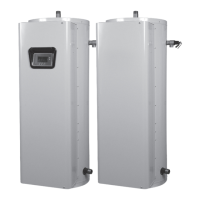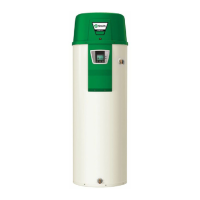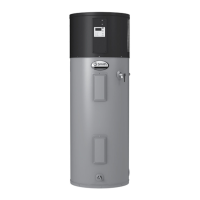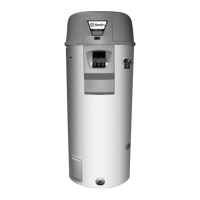
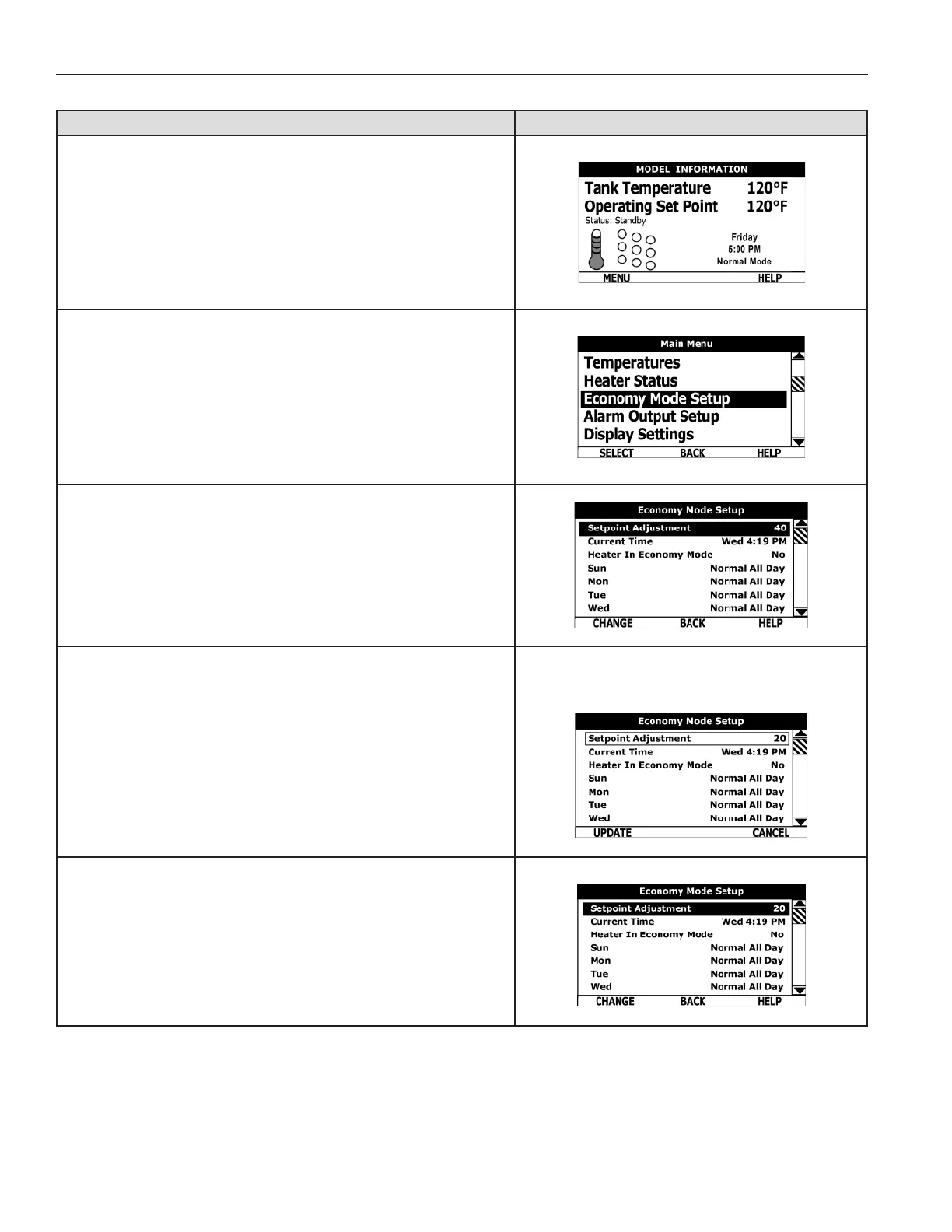 Loading...
Loading...
Do you have a question about the A.O. Smith 52 and is the answer not in the manual?
| Brand | A.O. Smith |
|---|---|
| Model | 52 |
| Category | Water Heater |
| Language | English |
Defines key terms like "Qualified Installer or Service Agency" for clarity.
Outlines essential safety measures, hazards, and warnings for safe operation.
Details the mandatory grounding requirements for electrical safety.
Warns about the flammability of hydrogen gas and necessary precautions.
Provides guidance and prerequisites before commencing the water heater installation.
Discusses critical points for selecting the optimal placement for the water heater.
Specifies the necessary plumbing and electrical skills for installation and service.
Covers adherence to instructions, local codes, and utility requirements.
Advises against connecting to non-potable water or using boiler treatment chemicals.
Recommends specific construction materials for field-installed circulating pumps.
Explains that insulation blankets are not necessary due to product efficiency.
Details the critical requirements and standards for the T&P relief valve.
Specifies the proper installation and safety of the relief valve discharge pipe.
Provides guidance on piping diagrams and recommended connection types like dielectric unions.
Explains considerations for water systems with devices like check valves or pressure reducers.
Addresses thermal expansion issues and the necessity of expansion tanks.
Covers general electrical installation compliance, grounding, and voltage requirements.
Provides tables for allowable conductor ampacities based on temperature ratings and conditions.
Instructions for converting a three-phase setup to single-phase service.
Instructions for converting a single-phase setup to three-phase service.
Refers to components and emphasizes never powering on without water or a relief valve.
Provides step-by-step instructions for safely filling the water heater tank.
Lists essential checks for installers during the heater's first operation.
Explains the function and reset procedure for ECO high-limit controls.
Details the multiple thermostat/ECO controls on surface mount models.
Discusses adjustable thermostats for water temperature control and scald prevention.
Guides on adjusting thermostats for surface mount controls, often by a service agent.
Describes Thermodisc thermostat types and their factory settings.
Describes Apcom thermostat types and their designated set points.
Explains how to adjust temperature settings via the UIM for electronic control models.
Highlights features like Advanced Diagnostics, Economy Mode, and Linear Sequencing.
Explains how to use the User Interface Module (UIM) for navigation and settings.
Describes the default display screen showing model information and status.
Details how to adjust the desired water temperature set point.
Explains how to adjust differential settings for heating element bank activation.
Describes how to adjust the probe offset for accurate temperature sensing.
Displays the current state of the ECO high temperature limit switch.
Shows the status of external supervisory control circuits for heating operation.
Indicates whether individual heating element banks are currently on or off.
Displays alarm status and the state of the alarm output relay for notifications.
Allows setting a reduced temperature for economy periods to save energy.
Enables setting the 24-hour clock for scheduling economy mode operations.
Indicates whether the heater is currently operating in economy mode.
Allows scheduling of "Normal" or "Economy" modes for each day of the week.
Defines the temperature difference for economy setpoint calculation.
Guides on setting the current time and day for the economy mode schedule.
Covers setting daily modes like "Economy All Day" or "Normal Operation Between".
Covers periodic tasks like flushing and checking the relief valve.
Details the importance and procedure for inspecting the anode rod to prevent corrosion.
Provides steps for flushing the tank to remove sediment and maintain performance.
Explains how sediment buildup can affect heating elements and how to remove it.
Guides on removing lime scale from heating elements using specific solutions.
Provides specific checks for diagnosing lack of hot water or low temperature.
Explains normal operational sounds and potential issues causing abnormal noises.
Identifies common areas where water leaks may occur and how to check them.
Explains the symbols used in the piping diagrams for system components.
